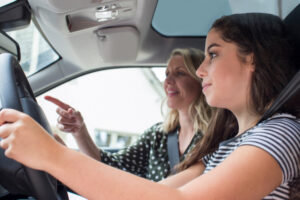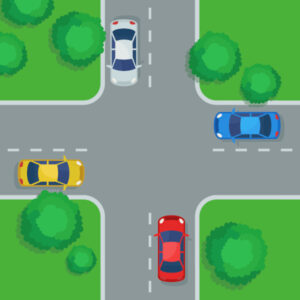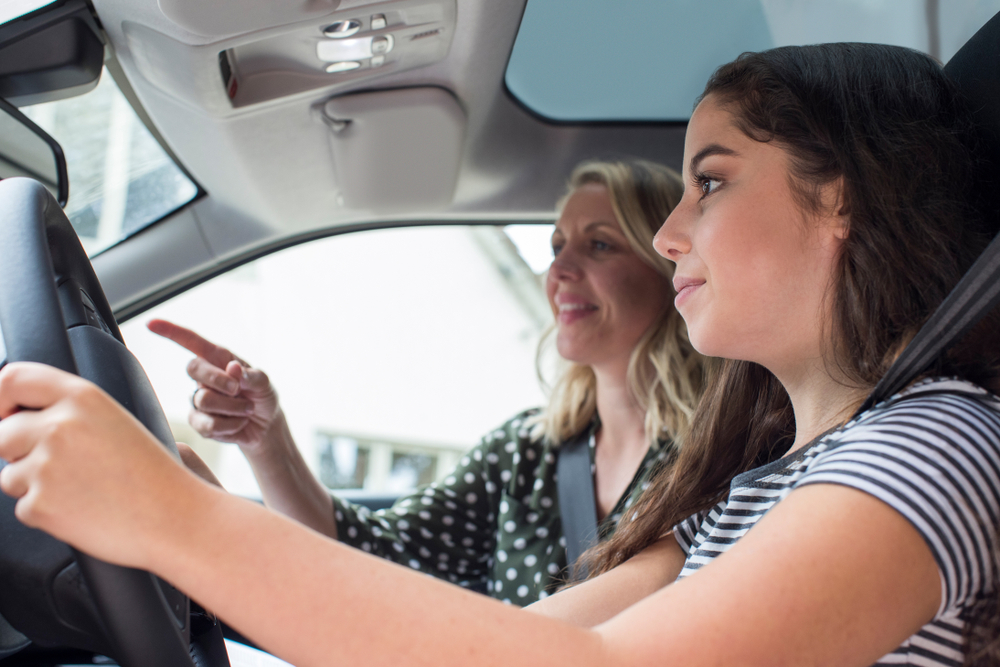 As a driver safety advocate and crash lawyer with 30 years of experience providing legal representation to people injured in motor vehicle accidents, one of my goals is to equip parents to provide the best possible protection for their teen drivers.
As a driver safety advocate and crash lawyer with 30 years of experience providing legal representation to people injured in motor vehicle accidents, one of my goals is to equip parents to provide the best possible protection for their teen drivers.
Over the last several months, I have been publishing blogs that provide valuable tips as to how parents can instill a safe driving approach in their teenagers.
This blog is about five of the most common hidden dangers young drivers face.
1. Vehicle Blind Spots
As an adult driver who has over 40 years of driving experience, I still encounter blind spots when I am driving, especially when I am driving a vehicle I am unfamiliar with. For new drivers, I would have to imagine, that blind spots are just something you learn to adjust to with experience. That being said, parents should instruct their teens about being extra alert when making left hand turns and changing lanes. These are the two most common circumstances that lead to blind spot “failure to yield” collisions.
Blind spots tend to be just behind and to the sides of a vehicle, but they can be anywhere that a driver can’t clearly see. Mirrors are incredibly useful in reducing blind spots, but they aren’t going to solve the problem completely.
Other than being extra alert, parents should teach their teen drivers to overcome blind spots by showing your teen how to adjust the mirrors on the vehicle properly. You can get the widest possible view by leaning forward in the driver’s seat, turning to the left, and adjusting the driver’s side mirror until the side of the vehicle is just barely visible. The same should be done with the passenger’s side mirror.
In addition to mirrors, your teen needs to get in the habit of looking over their shoulders to confirm that there is nobody in their blind spots.
If you have a vehicle with blind spot monitoring, that can be an additional tool to keep your child safe. However, it should never be used as a replacement for proper mirror placement or manually checking blind spots.
You should also teach your teenagers to avoid being in other drivers’ blind spots, especially around large trucks, which have much larger blind spots than regular vehicles. As you supervise the driving, practice identifying when you are in someone’s blind spot and how to move to a safer position on the road.
2. Teenage Passengers
 Passengers are problematic for teen drivers. The fastest way to distract a teenager is to put another teenager in the vehicle with them. AAA’s Foundation for Traffic Safety discovered that when a teenager is driving with only other teens in their car, the traffic fatality rates for all people involved in the car increases by more than 50 percent. Contrast this with teens driving with passengers aged 35 and older, where the overall fatality rate decreases by eight percent.
Passengers are problematic for teen drivers. The fastest way to distract a teenager is to put another teenager in the vehicle with them. AAA’s Foundation for Traffic Safety discovered that when a teenager is driving with only other teens in their car, the traffic fatality rates for all people involved in the car increases by more than 50 percent. Contrast this with teens driving with passengers aged 35 and older, where the overall fatality rate decreases by eight percent.
So why do teen passengers increase the risk of accidents?
Unfortunately, teens are more likely than adults to participate in risky driving behaviors, and this behavior gets worse when other teens are in the car. Your teenager is more likely to speed, drink and drive, and text and drive with teenage passengers, in large part due to peer pressure.
Parents can help prevent accidents by prohibiting teenage passengers in the vehicle. Most state Graduated Driver’s License programs, including Missouri’s, restrict passengers for teen drivers. As a parent, it is your job to enforce these passenger limit laws.
3. After-School Driving
While you might think that weekend nights are the most dangerous for your teen driver to be on the road, AAA has found that after school hours rival weekend nights as the most deadly time for teens to be on the road.
AAA analyzed crash data and discovered that 16- and 17-year-olds were involved in nearly as many fatal crashes between 3 and 5 p.m. Monday through Friday as were on Friday and Saturday nights from 9 p.m. to 2 a.m.
Part of the reason after school hours are so dangerous is the number of teen drivers on the road at this time. As school lets out, teens are on their way home or to their jobs, sports practices and games, other activities, and to visit friends. Teens are often unsupervised during after school hours, which could also contribute to risky driving behaviors.
AAA also noticed that traffic volume tends to be higher at this time as commuters and other adults are out on the roads, as well.
To reduce your child’s risk behind the wheel during after school hours, we suggest that you set clear expectations with your teen driver about following the rules and not having passengers in their vehicle during this time period.
4. Loud Music
Did you know that loud music can actually affect how you drive? It isn’t just the volume either. Researchers have discovered that volume, tempo, and type of music can dramatically affect drivers.
Some people have reported being unable to see well when music is too loud. This could be because our brains can’t focus on everything at the same time. Our brain can shift between multiple focuses, but it can’t stay focused on multiple things simultaneously. So, when our brains are taking in too much stimulation from multiple senses, it can shut other senses down, which explains why vision can be impaired when music is too loud in the car.
According to a study from Israel, young drivers report a more positive mood and more enjoyment while driving when listening to their preferred music. However, the study also found that when novice drivers were listening to their preferred music, their driving performance worsened. While listening to their favorite music, these young drivers made more traffic violations and errors, drove more aggressively, and were more distracted.
When the same participants were driving with no music or calming music with no lyrics and a slower tempo (also played at a lower volume), they were much safer behind the wheel.
This led the Israel researchers to conclude that the less complex and loud music is, the less distracting it is for drivers.
Teenagers listening to loud music or music that causes them to become distracted aren’t able to focus enough on the task of driving, leaving them vulnerable behind the wheel.
5. Intersections
 Intersections can be tricky to navigate for novice drivers. In fact, intersections can be the most dangerous place for teenage drivers. As people drive more aggressively and are more distracted, they are more likely to pull out in front of oncoming traffic or run red lights. For this reason, teens need to use the highest degree of care to best avoid collisions at intersections.
Intersections can be tricky to navigate for novice drivers. In fact, intersections can be the most dangerous place for teenage drivers. As people drive more aggressively and are more distracted, they are more likely to pull out in front of oncoming traffic or run red lights. For this reason, teens need to use the highest degree of care to best avoid collisions at intersections.
To help your teenager navigate the complexity of intersections, there are a few different scenarios you can discuss:
- Right of Way: Even if you have the right of way, you should continue to be cautious. Not all drivers are following the rules of the road, which means you need to be more aware than ever when approaching intersections, regardless of who has the right of way.
- Turning Right on Red: Many cars are no longer taking time to make sure they have space to turn right at a red light. Some drivers miscalculate the amount of time they have to pull out and get up to speed. Other drivers aren’t checking to see if people are turning left to go in the same direction they intend to go. Since other drivers aren’t always following the rules and stopping to yield to the traffic with the right of way, stay hyper-aware at intersections.
- Turning Left: It can be hard to see around other vehicles and judge driving speeds when you are trying to turn left through an intersection. The best thing for teenagers to do is move into the turn only if no vehicles are approaching. If you aren’t sure if you can make the turn, stay put. Proceed slowly if you can’t see around other vehicles to give yourself the ability to stop again should you see a vehicle barreling toward your car.
- Approaching an Intersection with a Green Light: As we mentioned above, even if you have the right of way, take caution when approaching a green light. If you notice a car creeping up that might turn right in front of you, slow down a little bit to give yourself a better chance of avoiding a car crash.
- Running Red Lights and Stop Signs: The number of people running red lights is on the rise. This is probably due to distractions and impatience, but drivers are putting themselves and others at risk when they blast through red lights. Take a couple of seconds before taking off at a green light to look for people who might run red lights.
- Four-Way Stops: Stop signs can be problematic because people don’t always understand when it is their turn to go. Typically, the rule is the person who stopped first gets to go first. When two people stop at the same time, one driver might wave the other on as a courtesy. When drivers are side-by-side, the rule typically says that the driver to the right goes first. If two cars stop simultaneously across from one another and one is turning, right of way would go to the person driving straight through the intersection. Finally, if two drivers end up stopped simultaneously and want to turn into the same place on the street, the person turning right should go first. Remember that not everyone knows or follows the rules, so use caution.
- U-Turns at Lights: One of the trickiest situations to navigate is U-turns at lights. As the person doing the U-turn, you want to make sure that you have the time and space for navigating the turn and that nobody will turn right into the lane you wish to occupy. If you are trying to turn right, it can be hard to determine if someone will U-turn and attempt to occupy the space you wish to occupy. In either scenario, exercise patience and use extreme care.
Parents could discuss so many issues with their teen drivers, but these five are some of the most dangerous that your teen might not even be aware of yet. Discussing these things with your teenager might help save their life.
Learn more about teen driver safety with the other blogs in this series:
Drive By Example: Show Your Teens How to Drive Safely
Teen Driver Safety: Protect Your Teen from a Car Crash
Why So Many People Aren’t Wearing Seat Belts
Why Glove Boxing the Phone Is the Best Example a Parent Can Set
Why Defensive Driving is the Best Thing Parents Can Teach Their Teen Drivers




